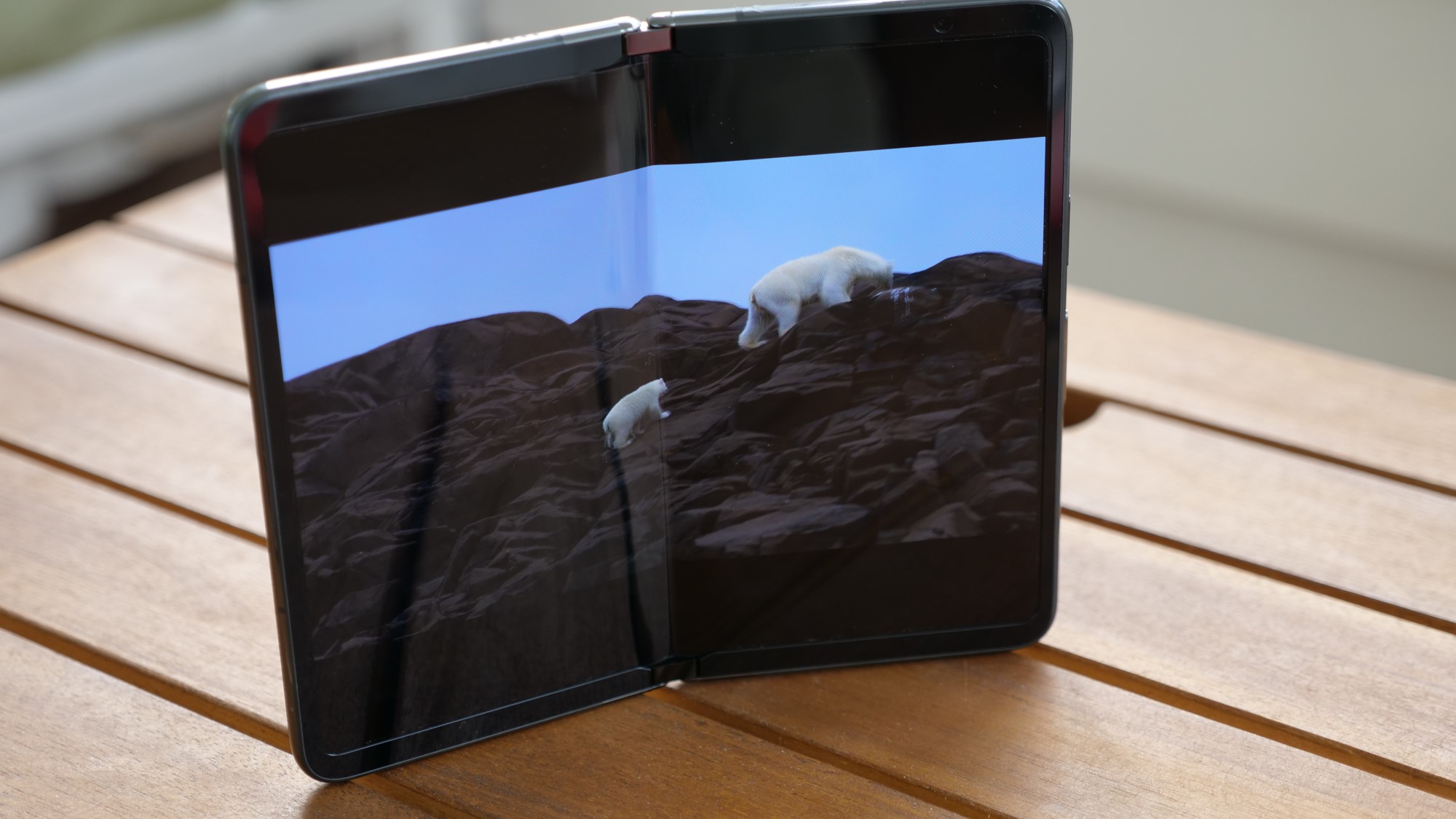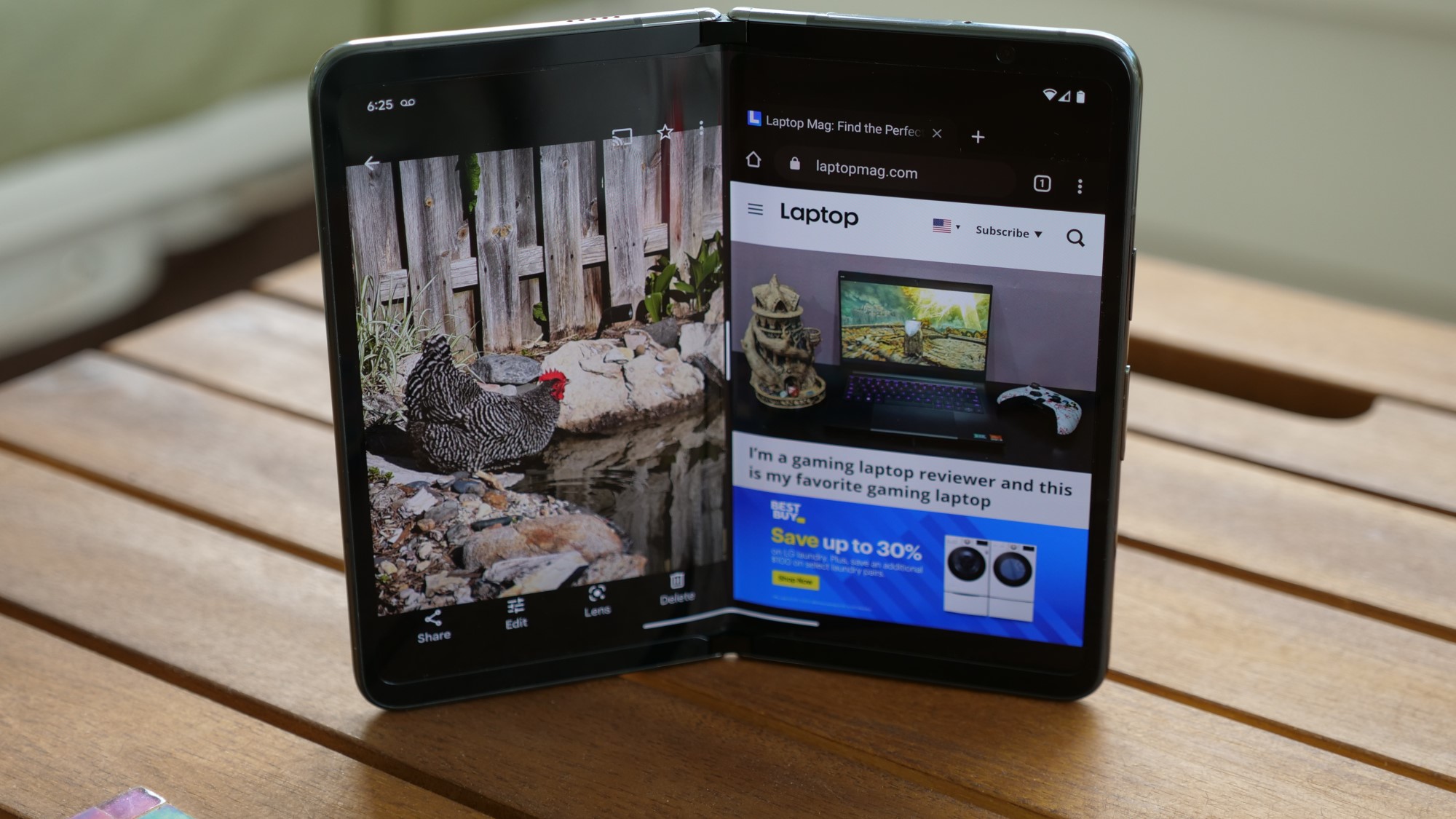
The Google Pixel Fold is the first meaningful competition for the Galaxy Z Fold 4 in the U.S. after years of Samsung dominating the foldable market pretty much unchallenged. We've seen experimental smartphones like the LG G8X ThinQ or Microsoft Surface Duo 2 that seem destined to be answers at phone fan trivia nights (is that a thing?), but no real mainstream threats.
The Google Pixel Fold brings much of what we've seen from the rest of the suddenly resurgent Pixel lineup over the last two years to bear against the Samsung juggernaut. That includes some unique Pixel features, best-in-class photos, reliable software updates, and a stunning design.
There's just one piece of the Pixel puzzle missing, but it's a big one: value. As Google transitioned to its Tensor chipset it also made itself synonymous with affordability on Android. The Google Pixel 7a is a near flagship-class smartphone for just $499, nothing in that price range comes close to it, so when the Pixel Fold was announced at $1,799 it sent me spinning.
It's the same price as Samsung's Galaxy Z Fold 4 and I understand that the multiple displays, cameras, and more are expensive along with recouping development costs, but while I'm enamored with the Pixel Fold hardware and software, this factor alone is going to drive away many buyers. However, given the dearth of tablet-style foldable phones, Google may still have a chance as it isn't just a carbon copy of the Z Fold 4. Read on to see if it's the right foldable for you.
Google Pixel Fold pricing and configurations
Google has built the Pixel brand up as a strong value proposition in the phone market in recent years, which is a large part of how the Pixel 7a claimed the top spot on our best smartphones, but unfortunately, the Fold isn't following in those footsteps.
If you decide you need the Pixel Fold in your life, be prepared to sell something, possibly a vital organ. Starting at the same $1,799 (£1,423 U.K.) as the Galaxy Z Fold 4, our hopes for a price competitor to bring the Galaxy Z Fold 5 down this year were dashed.
The good news is there are no options to choose from outside of the color: Obsidian or Porcelain. Regardless of your choice of hue the smartphone comes equipped with a Google Tensor G2 processor with a Titan M2 security coprocessor, 12GB of RAM, and 256GB of onboard storage.
We haven't seen an affordable tablet-style foldable yet, so if you are set on one this price isn't actually outlandish, but it is hard when you consider that you could buy a Pixel 7a, Pixel Tablet, Pixel Watch, and Pixel Buds Pro for less than the Pixel Fold alone.
Google Pixel Fold design

I eagerly watched the Pixel Fold reveal at Google I/O 2023 and had a hands-on report from our EIC Sherri L. Smith, but I still wasn't prepared for how small the Google Pixel Fold is when I unboxed it. It looks positively diminutive alongside the much taller and slightly thicker Galaxy Z Fold 4.
However, weighing in at 10 ounces, it feels every bit the part of a tablet-style foldable when you pick it up. To give you the rest of the hard numbers, the Fold measures 5.5 x 3.1 x 0.5 inches when folded and 5.5 x 6.2 x 0.2 inches when unfurled.
Compared to the Samsung Galaxy Z Fold 4 (9.3 ounces, 6.1 x 2.6 x 0.55-0.62 inches (folded), 6.1 x 5.1 x 0.21 inches (unfolded)), the Pixel Fold is indeed the slimmest. Looking at the Pixel Fold unfolded is slightly terrifying as your brain tells you anything that thin could easily snap. Google tried to put our minds at ease by telling us that it's rated for the same 200,000 folds as the Galaxy Z Fold 4 and it's made from a multi-alloy steel with Corning Gorilla Glass Victus protecting the displays.

We'll keep you updated on how our review unit fares over time, but so far any concerns seem unfounded. The phone feels solidly built and has held up well case free, although I can't imagine eschewing a case permanently on this phone.
Google pushed that this was the "slimmest foldable", and while I'll grant that is the right move from a marketing standpoint, I'm far more interested in it as the "shortest foldable" tablet-style foldable. That's the metric that has the largest impact on holding and using the Pixel Fold versus the Z Fold 4. That shorter and wider cover display on the Pixel Fold is vastly more usable than that of the Z Fold 4, which saves you from cracking open (sorry, unfortunate choice of words) the foldable for simple tasks.
Taking a quick tour around the Pixel Fold, you have a glossy, tough Corning Gorilla Glass Victus protected 5.8-inch cover display with a 9.5-megapixel pinhole camera at the top in the middle of the display. The other half of the rear panel is made of a matte aluminum finish with a shiny raised module that houses the trio of cameras (48MP, 10.8MP, and 10.8MP) at the top with a gleaming G towards the middle.

The Fold breaks slightly from the Pixel 7 Pro with its module as it is glossy and uniform in height, whereas the 7 Pro is matte and curves down at the sides. I'd have preferred that style make its way to the Fold as well, but it's still better than the offset module that most phones use.
Unfolding the phone reveals the massive 7.6-inch display surrounded by larger bezels than you'll find on any other phone in 2023. While those bezels caused some unfortunate flashbacks to the Microsoft Surface Duo for Laptop Mag Editor Kim Gedeon, they aren't so bad that you won't adjust. One reward for those bezels is that the 8MP camera is entirely in the bezel, so no hole-punch or under-display camera interfering with your big screen experience.
The sides of the phone are made of gleaming aluminum. Buttons for power and volume sit on the right while the USB Type-C port resides along the bottom on the right half of the phone and the SIM slot is on the left.
Notably, the Pixel Fold also boasts the same IPX8 water resistance as the Galaxy Z Fold 4, so don't worry about rain or a brief dip in the water destroying your $1,799 phone.
Google Pixel Fold display

So many displays! For activities! First, you have the 5.8-inch cover display on the front of the phone. It has a 2092 x 1080 pixel OLED at 408 pixels per inch (ppi) with a 17.4:9 aspect ratio and a 120Hz refresh rate. The interior display measures 7.6 inches with a 6:5 aspect ratio. The 2208 x 1840 pixel OLED panel at 380ppi has a 120Hz refresh rate.
If you've looked at any foldables you are accustomed to the crease at the center of the display. Unfortunately, Google can't apply Magic Eraser to the crease, but just as we've seen with other foldables you stop noticing it outside of those occasions when you run your finger over it swiping on the display.

I turned to Our Planet II on Netflix to get a feel for the Pixel Fold's content consumption canniness. They did not disappoint with a section on polar bears showing off excellent HDR in a scene split between a bright blue sky and a dark rocky outcropping that a polar bear and her cubs were traversing retaining sharp detail and color in both.
By the numbers, things look good, but not great with our lab testing showing the internal display hit 88.4% of the DCI-P3 color gamut, while the cover display reached 90.1%. Google's problem here is that the Pixel Fold is up against the undisputed display champ in Samsung and the Galaxy Z Fold 4. Samsung's foldable gave us a result of 146.7% on the front panel and 158.7% on the main screen. The current smartphone average is 93%, but I'd stress that this number is brought up by some outliers like the Z Fold 4, we most often see results in the upper 70s to low 80s.

The Pixel Fold's internal display is one of the brightest we've seen, reaching a peak of 1,030 nits in HDR mode and 1,172 nits in standard. We are still running some additional tests on the interior display and will update this review with our final findings. By comparison, the Galaxy Z Fold 4 topped out at 905 nits on the internal display and 411 nits on the cover display.
Google Pixel Fold audio

The Google Pixel Fold features a pair of Spatial Audio stereo speakers located on the left left and bottom right of the phone when it is unfolded in its portrait orientation. This placement proves effective at giving you a stereo soundscape regardless of the orientation of the phone.
I listened to "Chaos Is a Ladder" by Ramin Djawadi from the Game of Thrones sound track and came away happy, but not blown away by the audio performance from the Pixel Fold. It gives you plenty of volume and holds clean and clear even at 100% while also wrapping you in the music, but it just can't deliver any meaningful bass. This is common among most phones and Google's engineers may have been burned as witches if they figured out how to squeeze great bass performance out of the world's thinnest foldable, so this is probably for the best.
If you are watching a video, a TikTok, or just casually listening to something the Pixel Fold is more than adequate, but to really immerse yourself in your music (or enjoy anything with a bassline) you need to avail yourself of some wireless earbuds.
Google Pixel Fold performance

The Pixel Fold is powered by Google's Tensor G2 chip. Yes, the same chip found in the Pixel Tablet, Pixel 7 Pro, Pixel 7, and Pixel 7a. Now we've now covered in our reviews of those devices that while the Tensor G2 can't match the benchmarks of the best chips from Qualcomm or Apple, it is powerful enough for all but the most power-hungry users.
However, I'm less inclined to give Google a hall pass on this one. For those keeping track at home, two of those Pixel devices with the Tensor G2 are $499 and the most expensive is $899, whereas I'll remind you that the Pixel Fold is $1,799. Now you are paying for the engineering wizardry and all of those displays more so than the chipset, but it's still a tough pill to swallow. Google's just two generations into Tensor at the moment, but with its ever-expanding retinue of products the company needs to create a Tensor Pro for its more premium products.
Returning to the here and now, the Pixel Fold actually put up worse Geekbench 5 results than its siblings with a multicore score of 1,909. The Galaxy Fold Z 4 with its Qualcomm Snapdragon 8+ Gen 1 is in a different league with its 3,831, which isn't that far above the 3,740 smartphone average.

The Jetstream 2.0 benchmark (higher is better), is the lone bright spot for the Pixel Fold with a score of 118.3, easily eclipsing the Galaxy Z Fold 4's (87).
Running the Adobe Premiere Rush video transcoding test where the tablet converts a 4K video to 1080p resolution, the Pixel Fold turned it around in 1 minute and 1 second, again not fast enough to keep up with the Galaxy Fold Z 4's time of 0:45.
On the Wild Life Unlimited benchmark which tests the GPU, the Pixel Fold only managed 11 frames per second. Samsung comes out on top again with 16 fps, although not as crushing a defeat.
Alright, so those are the benchmarks, but what is the reality of using the Pixel Fold? I've run it through a gauntlet of different performance tests over my time with the device so far including loading up dozens of tabs in Google Chrome while a YouTube video plays in the background and then opening a second app in Split View. All of that multitasking goodness didn't cause the Pixel Fold to stutter for a second.
Firing up my goto mobile game PUBG Mobile, I was able to carry my squad to a victory with smooth gameplay at high, but not Ultra settings. This is where you will certainly see a difference between the Tensor G2 and a high-end Qualcomm Snapdragon or Apple Bionic chipset, you can max every setting on any game with the latter two without them breaking a sweat. The Tensor G2 needs to come in a notch below that, so if gaming is a primary concern for you, definitely consider that. However, for typical tasks and the kind of casual mobile gaming I do I've yet to experience any slowdowns.
Again I'll update as I spend more time with the phone to note how the performance is holding up, but if anything Google's Tensor chip has shown a tendency to improve as the software learns your habits.
Google Pixel Fold battery life and charging

We still need to complete a number of our battery tests on the Google Pixel Fold, but the initial test was solid with the phone delivering 10 hours and 21 minutes from its 4,821mAh battery. This test had the internal display running at 60Hz while it browsed the web set at 150 nits. The Galaxy Z Fold 4 by comparison made it an average of 10 hours and 6 minutes on the same test.
We'll update as our lab completes additional testing of the Pixel Fold at its 120Hz Adaptive Smoothness setting on the internal display and in both modes on its cover display, but it's a good sign that the Pixel Fold is following the Pixel Tablet in kicking the Pixel curse when it came to battery life testing.
In my daily usage, I've not been able to kill the Pixel Fold yet, with the battery typically sitting at around 15-20% at the end of the day. It's particularly notable as I've been taking dozens of photos and short videos, watching Netflix, listening to podcasts, multitasking with Chrome and Twitter, and playing PUBG Mobile during my testing.
On the charging front things are less rosy. Using a 20W charger the Pixel Fold only reached an 18% charge in 15 minutes and a 38% charge in 30 minutes for us. It's tough when you see the OnePlus 11 topping up completely in 30 minutes. You do also have wireless charging, so if you've dotted your house with wireless chargers as I have that will ensure you stay powered up.
Google Pixel Fold cameras

While there are individual areas where the Pixel cameras may lose to competitors (iPhone: Portrait mode, Samsung: Telephoto), there is no phone I would rather have in my pocket for photos than a Pixel. Thankfully, that holds true for the Google Pixel Fold as well.
Google's foldable gets a slightly confusing lineup of cameras as it doesn't match up identically with any of the other Pixels, but it's a solid collection that also benefits from Google's unmatched computational photography. You also have some handy foldable tricks like tripod mode that will allow you to capture selfies, extra steady night shots, or even astrophotography without needing any extra equipment.
The primary wide-angle is a 1/2-inch 48MP Quad PD sensor with an f/1.7 aperture that allows it to deliver strong low-light shots and gives you sharp and vivid results in daylight. The ultra-wide and telephoto are both 10.8MP, with the former featuring an f/2.2 aperture on a 1/3-inch sensor, while the latter is a 5x optical zoom with an f/3.05 aperture on a 1/3.1-inch sensor.
The 9.5MP hole-punch front-facing camera on the cover display offers an f/2.2 aperture, while the 8MP camera above the internal display gives you an f/2.0. The latter not surprisingly obliterates the results that you can get from the 4MP under-display camera on the Galaxy Z Fold 4, but one of the benefits of a foldable is that you can always easily use the rear cameras for selfies too.

The weather has been a little spotty in Wisconsin during my time with the Pixel Fold so far, I'll add more photos and impressions over the coming days as I'm able to capture some different conditions. But overall it's a Pixel and there's no higher praise I can offer for a smartphone camera.
The wide-angle camera delivers accurate colors with just a touch of punch-up to them from HDR. The pot of flowers in the first shot (that we've struggled to keep alive after 3 weeks of no rain here) shows off the brilliant purples contrasted by deep greens. In the second shot the mural on a local restaurant similarly nails the reddish-orange hue of the siding, while making the most of the brief blue sky I had that day. In both cases, the image is sharp as well, with the minute details of the petals and the stone peeking through the worn siding clearly visible.




Turning to the ultra-wide for the same shots, another feature of the Pixels that I love is that the color science holds up excellently between the lenses. While we are now moving back to a 0.6x magnification from the 1x of the primary and dropping to a 10.8MP sensor, you wouldn't know it to look at the photos. The colors in both the floral and mural shots are identical and while we're at a bit more of a remove you still get excellent detail if you feel like pixel peeping.




I was excited to see Google gave us a 5x optical zoom telephoto on the Pixel Fold and it delivers. Color science isn't quite as on point with the other two sensors when at 5x, but it comes back in line with them perfectly when you zoom in to 10x or 20x. The latter remains mystifying to me, I need to take more side-by-side photos to see if it actually beats Samsung's 20x on the Galaxy S23 Ultra, but I can comfortably say that it is vastly superior to anything in that range from the Samsung Galaxy Z Fold 4 or the iPhone 14 Pro. In my samples, I have a tight shot from each of the scenes that I captured and the clarity at that reach will shock you.




Finally, we turn to the front-facing cameras on the Pixel Fold. The results from the hole-punch camera on the cover display are my least favorite. The image is sharp capturing every detail on my face (regrettably), but it lacks that pop that you get from the other sensors. Those somewhat muted colors give the image a lifeless look (again regrettably), that you certainly don't want in a selfie. The results from the internal camera are similar. The good news is that with the tap of a button, you can use the rear sensors for your selfies by using the cover display as your viewfinder, I would strongly recommend doing that. Just don't use the ultra-wide unless you are going to set the phone down in tripod mode, you'll look a bit alien in an ultra-wide from that close-up.


Google Pixel Fold software

The Google Pixel Fold is running Android 13, but it gets some Pixel magic sprinkled in for good measure.
Pixel fans love features like Direct My Call which gets you out of interminable menu options from businesses by telling you what they are without having to wait to hear them. I lean on Google's Recorder app regularly for interviews and briefings as it not only records the audio and creates a transcript, but it even labels speakers for you to easily update later. If you don't want to fumble with typing on your foldable the Pixel Fold can easily type for you without even touching the display by just saying "Hey Google, type."
While Android rightly gets criticized for its lack of tablet-optimized apps, things are improving. Native apps like YouTube, Calendar, Weather, Chrome, YouTube Music, News, Maps, Gmail, Photos and Play all offer unique layouts for the 7.6-inch internal display on the Pixel Fold. Other popular apps are coming on board too with WhatsApp, TikTok, Disney+, Spotify, Hulu, and Netflix among some of the early apps to adopt a special layout and support for tabletop viewing on the cover display.
Google also offers strong software support with five years of security updates and three major OS updates. And while the latter may not sound like much compared to the 6-7 years of major OS updates that iPhone gets, remember that Android breaks most of its features out into apps, so you will get new features for many more years.
Bottom line

I'm thrilled to finally have another tablet-style foldable to compete with the Galaxy Z Fold 4 and Google actually managed to change things up with its form factor while also delivering a worthy challenger.
The overall experience of using the Pixel Fold is excellent and I'm shocked that Google did this well right out of the gate with its first foldable, but I am having a hard time reconciling that price, particularly in light of its Tensor G2 chipset. This brings me back to the Galaxy Z Fold 2, which felt like an absolute revelation compared to the original Galaxy Fold, but you still felt like it was a device that was finding its way.
If you can stomach the price I recommend the Google Pixel Fold, it's a gorgeous and well-thought-out phone, but it's a less full-throated recommendation than I give the Galaxy Z Fold 4. Despite my preference for the Pixel Fold design and cameras, I'm slightly concerned about how the Tensor G2 performance will age, which is something I can forgive on a $499 phone, but not when you are spending close to $2,000.
Here's hoping that we finally get that affordable tablet-style foldable from OnePlus this year and it puts price pressure on Samsung and Google to make these awesome devices something you can buy without selling your body to science.







